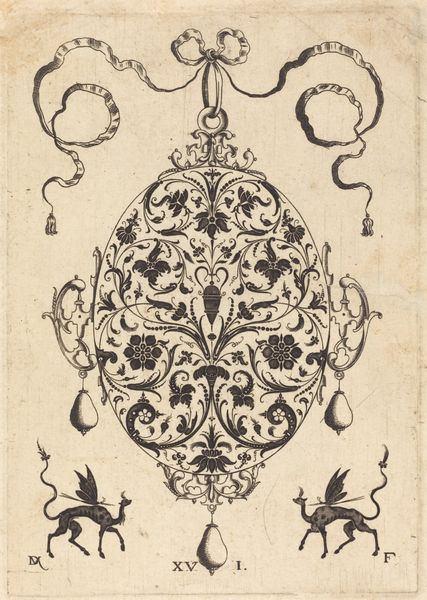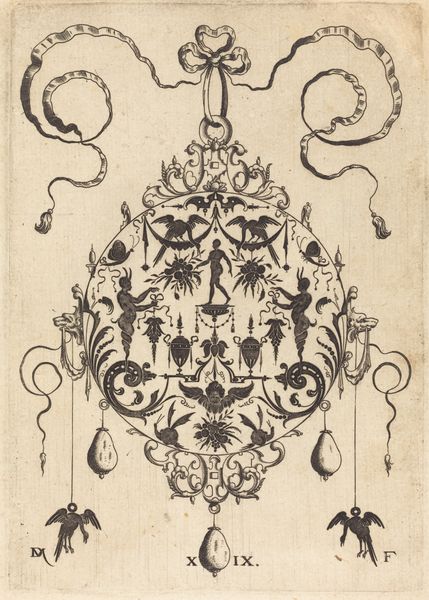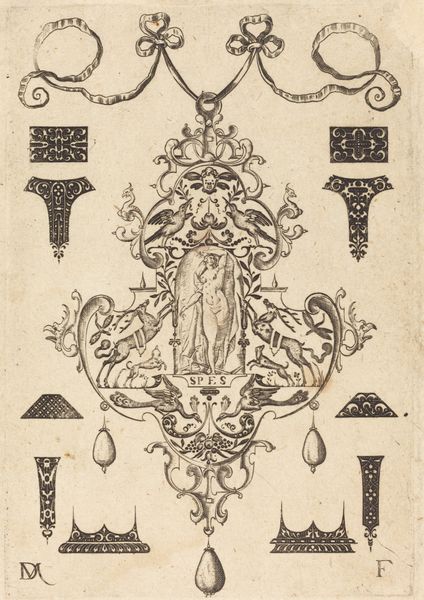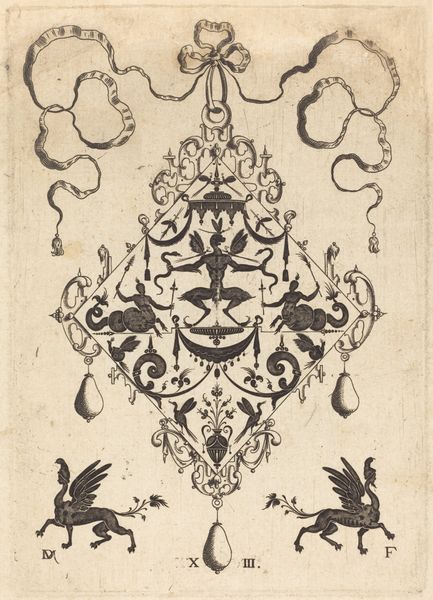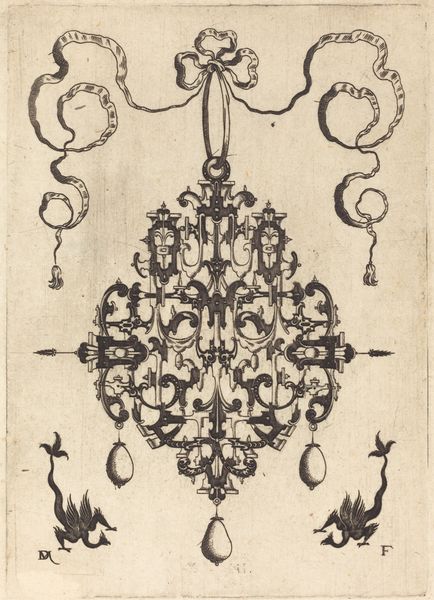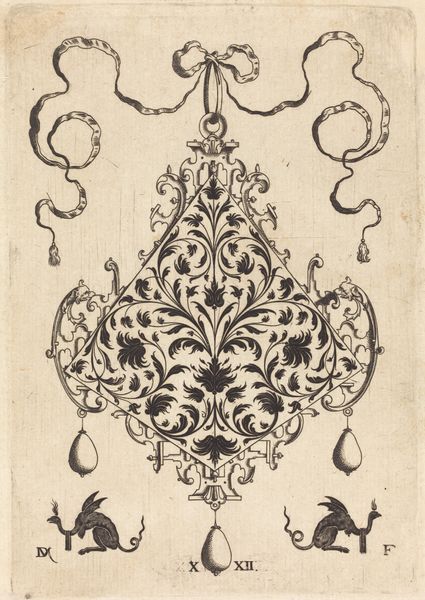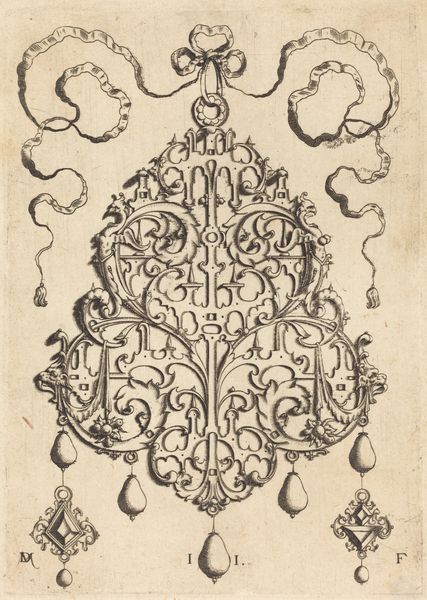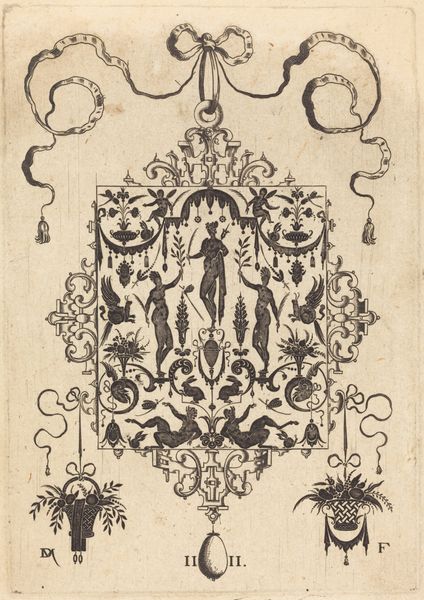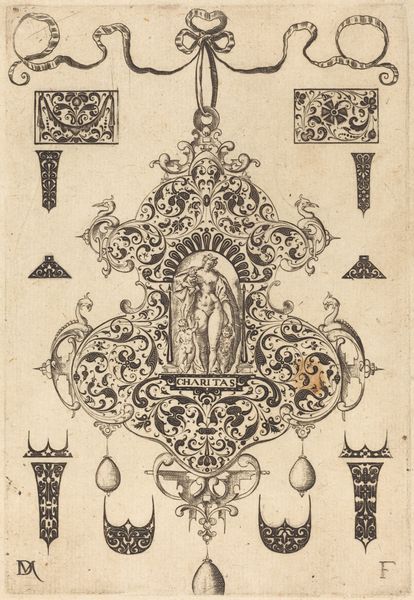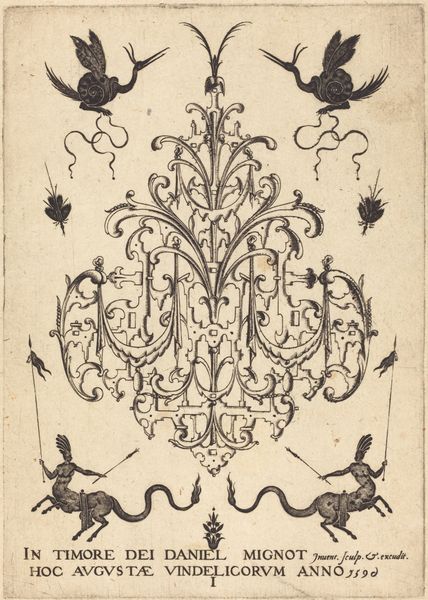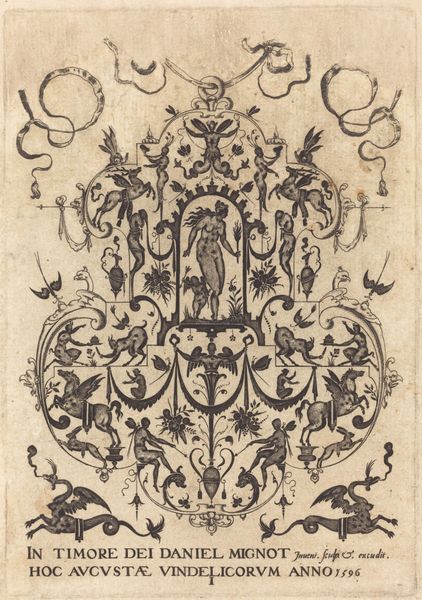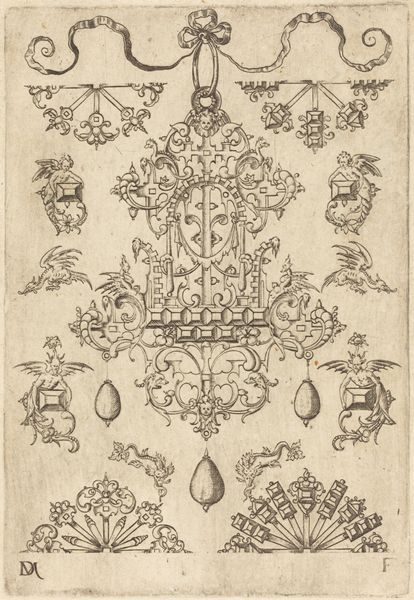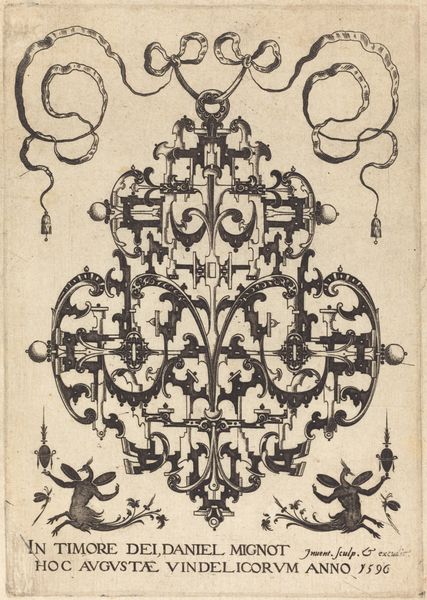
drawing, print, engraving
#
drawing
#
allegory
# print
#
mannerism
#
figuration
#
form
#
11_renaissance
#
line
#
history-painting
#
engraving
Copyright: National Gallery of Art: CC0 1.0
Curator: Ah, this engraving by Daniel Mignot, circa 1596, titled "Large Pendant, Flora Standing, Holding a Fruit Garland." What catches your eye about it? Editor: Immediately, it feels so meticulously ordered, but somehow playful. A controlled chaos in the linework—almost as if someone tried to tame a wild garden with geometry. Curator: An astute observation. The symmetry, typical of Mannerist aesthetics, is undeniable, especially in the carefully balanced composition. Note the ovoid form and how within it, Flora, stands centrally, flanked by both floral and zoomorphic elements. Editor: I like how the fantastic creatures - those winged lions or griffins – are juxtaposed with these symmetrical vases. It feels like Mignot is riffing on classical mythology, then tossing in a bit of madcap fancy. There's a certain charm in how the formal lines allow those light flourishes. Curator: Indeed. The linear precision elevates the entire work beyond mere ornamentation. The use of line, the calculated distribution of dark and light... it articulates form, volume and also suggests the exquisite texture of the flora depicted, adhering to principles found in contemporary engravings meant for dissemination among artisans. Editor: Do you think these engravings were models? It feels so specific - down to the hanging "fruit" – that it must have been conceived for fabrication. The work even looks like an eye. Is Flora offering perspective, enlightenment? Curator: Interpretations can, of course, vary. Given the period, the allegorical elements should not be discounted. Flora as a symbol of spring, rebirth... perhaps it served as both an inspirational template and an emblem, speaking to the natural world. The piece also uses clear semiotic signifiers for royalty such as laurel wreaths. Editor: That's right; it brings up that sense of privilege from these patterns that I mentioned early. Ultimately, it is about balance between beauty, meaning, and execution. Curator: A sentiment I echo entirely. It’s through pieces like these that we discern the intricate dance between aesthetics and cultural contexts in art history.
Comments
No comments
Be the first to comment and join the conversation on the ultimate creative platform.
